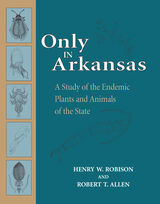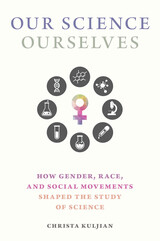7 start with O start with O

Walter T. Schmid offers the first original interpretation of the Laches since Hermann Bonitz in the nineteenth century in the only full-length commentary on the Laches available in English.
Schmid divides the book into five main discussions: the historical background of the dialogue; the relation of form and content in a Platonic dialogue and specific structural and aesthetic features of the Laches; the first half of the dialogue, which introduces the characters and considers the theme of the education of young men; the inquiry with Laches, which examines the traditional Greek conception of military courage; and the inquiry with Nicias in which two nontraditional conceptions of courage are mooted, one closely associated with the sophistic movement in Athens, the other with Socrates himself. Furnishing a detailed paragraph-by-paragraph reading that traces Socrates’ ongoing quest for virtue and wisdom—a wisdom founded in the action of a whole human life—Schmid conclusively shows how and why the Laches fills an important niche in Plato’s moral theory.

Serious study of the art of India began only in the nineteenth century. This small volume provides a masterly overview of the scholarship of the past century and a half.
Mr. Chandra's purpose is twofold: to help present–day students understand their scholarly heritage, and to encourage them to re-examine their own methods and assumptions. His histographical approach enables him to pay tribute to the great achievements of the pioneers in the field and also to notice the manner in which errors of fact and method have crept into some of the contemporary thinking and writing on the subject. Rather than attempt to discuss the writings of every scholar of note, he restricts himself to a few whose work, in his opinion, clearly represents the various stages of the development of the discipline. In analyzing their contributions, he concentrates on the broad methodological thrust of their work and not on the details of their conclusions.
The study of architecture is considered first, because it was regarded by the ancient Indians as the most important of the visual arts and was the earliest of the arts to receive careful, analytic treatment in modern times. Sculpture is taken up second, and last the study of Indian painting, the area in which the most remarkable progress has been made in the last twenty–five years. In the course of the discussion many topics of broad interest are touched upon, including the relation of art history to the other disciplines, problems presented by various methods of classification, iconography and iconology, the relevance of style, the meaning of form, and the connection between artists and patrons.



When Christa Kuljian arrived on the Harvard College campus as a first-year student in the fall of 1980 with copies of Our Bodies, Ourselves and Ms. magazine, she was concerned that the women’s movement had peaked in the previous decade. She soon learned, however, that there was a long way to go in terms of achieving equality for women and that social movements would continue to be a critical force in society. She began researching the history of science and gender biases in science, and how they intersect with race, class, and sexuality.
In Our Science, Ourselves, Kuljian tells the origin story of feminist science studies by focusing on the life histories of six key figures—Ruth Hubbard, Rita Arditti, Evelyn Fox Keller, Evelynn Hammonds, Anne Fausto-Sterling, and Banu Subramaniam. These women were part of a trailblazing network of female scientists in the 1970s, 80s, and 90s who were drawn to the Boston area—to Harvard, MIT, and other universities—to study science, to network with other scientists, or to take a job. Inspired by the social and political activism of the women’s movement and organizations such as Science for the People, the Genes and Gender Collective, and the Combahee River Collective, they began to write and teach about women in science, gender and science, and sexist and racist bias and exclusion. They would lead the critiques of E. O. Wilson’s sociobiology in 1975 and Larry Summers’ comments about women in science thirty years later.
Drawing on a rich array of sources that combines published journal articles and books with archival materials and interviews with major luminaries of feminist science studies, Kuljian chronicles and celebrates the contributions that these women have made to our collective scientific knowledge and view of the world.

By surveying the present predicament and the current grassroots impulse toward reconsidering the meaning of the continent, Out of One, Many Africas gives shape and momentum to a crucial dialogue aimed at transforming the study of Africa

READERS
Browse our collection.
PUBLISHERS
See BiblioVault's publisher services.
STUDENT SERVICES
Files for college accessibility offices.
UChicago Accessibility Resources
home | accessibility | search | about | contact us
BiblioVault ® 2001 - 2024
The University of Chicago Press









